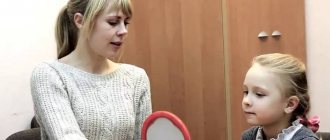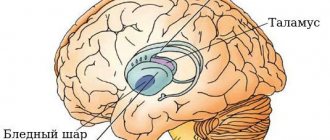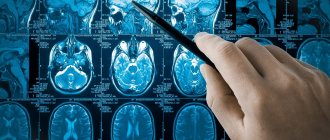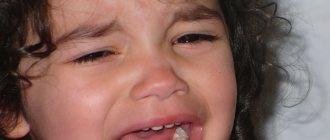Principles and methods of speech therapy.
PRINCIPLES AND METHODS OF Speech Therapy.
In speech therapy science, in connection with the characteristics of its goals and objectives, one can distinguish principles and methods of diagnosis and principles and methods of correction.
Speech is examined during diagnosis as an integral system, in the structure of which all links are interconnected.
For example: identified deficiencies in sound pronunciation in a 7-year-old child may be accompanied by immaturity of phonemic hearing and phonemic perception. And this will threaten possible writing and reading impairments.
Deficiencies in pronunciation and phonemic processing may make it difficult to master vocabulary, especially words with similar sounds.
Consequently, both in the diagnostic process and in subsequent correction, it is necessary to take into account the place and role of pronunciation disorders in the general system of the child’s speech activity. This is reflected in the structure of speech cards.
Speech therapy is based on the following basic general didactic principles: scientific nature, systematicity and consistency, accessibility, visibility, strength, educational nature of learning, consciousness and activity, individual approach.
And specific principles: systematicity, complexity, the principle of development, the principle of considering speech disorders in connection with other aspects of the child’s mental development, the activity approach, the ontogenetic principle, the principle of taking into account the etiology and mechanisms (etiopathogenetic principle), the principle of taking into account the symptoms of the disorder and the structure of the speech defect, the principle workaround,
Let's look at some of them.
Etiopathogenetic - it is necessary to take into account the totality of etiological factors that determine their occurrence. These are external, internal, biological and socio-psychological factors.
Systematicity and taking into account the structure of a speech disorder - presupposes the need to take into account the structure of the defect in speech therapy work, determining the leading disorder, the relationship of primary and secondary signs.
Complexity - speech disorders are a syndrome in the structure of which there are complex connections between speech and non-speech symptoms. A comprehensive impact is required.
A differentiated approach is carried out on the basis of taking into account the etiology, mechanisms, symptoms of the disorder, the structure of the speech defect, age and individual characteristics, and takes into account the general and specific patterns of development of abnormal children.
Stage-by-stage – each stage is characterized by its own goals and objectives, methods and techniques of correction, the prerequisites for the transition from one stage to another are sequentially formed.
Ontogenetic – taking into account the patterns and sequence of formation of various forms and functions of speech.
Taking into account personal characteristics - there is an uneven development of its individual aspects, a violation of interpersonal relationships.
Accounting for leading activities - play (preschoolers) or educational (schoolchildren).
Conditions for natural speech communication - modeling of various situations of speech communication, close communication between the speech therapist and parents, educators, teachers.
The principle of systematicity is based on the idea of speech as a complex functional system, the structural components of which are in close interaction. In this regard, the study of speech, the process of its development and correction of disorders involves influencing all components, all aspects of the speech functional system.
The principle of development involves identifying in the process of speech therapy work those tasks, difficulties, and stages that are in the zone of proximal development of the child.
The study of children with speech disorders, as well as the organization of speech therapy work with them, is carried out taking into account the child’s leading activities (subject-practical, playful, educational).
The development of a methodology for correctional speech therapy is carried out taking into account the sequence of appearance of the forms and functions of speech, as well as the types of activities of the child in ontogenesis (ontogenetic principle).
The occurrence of speech disorders in many cases is due to a complex interaction of biological and social factors. For successful speech therapy correction of speech disorders, it is of great importance to establish in each individual case the etiology, mechanisms, symptoms of the disorder, identification of leading disorders, and the relationship between speech and non-speech symptoms in the structure of the defect.
In the process of compensating for impaired speech and non-speech functions and restructuring the activities of functional systems, the principle of a workaround is used, i.e., the formation of a new functional system bypassing the affected link.
Analysis of speech disorders and speech therapy are based in all cases on the etiopathogenetic principle (taking into account the etiology of the mechanisms of speech disorders); the principle of a differentiated approach, step-by-step, formation of speech skills in conditions of natural speech communication; the principle of a workaround (formation of a new functional system bypassing the affected link).
Nominated by Professor R.E. Levina.
The principle of development - from the position of this principle, the mechanism of speech impairment is determined. It is necessary to collect and analyze all clinical data and general information about the patient. This will help determine the clinical form of speech pathology. This is necessary to predict work, to determine work deadlines, to determine communication with other specialists.
The principle of a systems approach. Speech is a unified system that includes the following components: phonetics, vocabulary, grammar. They are closely interconnected and determine each other’s development. The following variants are distinguished based on the structure of the defect: FNR phonetic underdevelopment of speech - only sound pronunciation suffers; FFNR, against the background of defective sound pronunciation, has underdeveloped phonemic hearing. Phonemic underdevelopment of speech - being able to pronounce sounds correctly, they mix them up in pronunciation (children sat on huts, just as children’s eyes blare). OHP - sound pronunciation, phonemic hearing, poor vocabulary, and speech agrammatism suffer. To determine a speech defect, a speech therapist carefully examines all components of the patient’s speech. The speech therapist determines the content of correctional work.
The principle of the connection of speech with other aspects of mental development.
A) It is necessary to establish (L.S. Vygotsky: “Look at the root cause”) whether the child’s speech disorder is primary, or whether it is a consequence of another pathology. The choice of educational route depends on this. For example: The root cause of the UO is the consequence of speech,
or visual memory, perception, visual-effective thinking is normal, auditory memory, verbal-logical thinking is underdeveloped, which means speech is primary, mental retardation is secondary.
Training takes place from the root cause.
B) The speech therapist must know the structure of the child’s mental development in order to work not only on speech during speech therapy sessions, but also to further develop the child’s mental functions.
C) It is necessary to take into account the patient's reaction to his defect.
Adequate - knows, is dissatisfied, is ready to work hard and hard to cope with the defect, as a rule, strong-willed, conscientious patients. An indifferent (indifferent) reaction to a defect—reluctance to work, thinks it is very simple, or a conscript—knows about the defect, but deliberately refuses to work.
Patients with hyper-emotions explain all troubles and failures by their speech defects, rarely believe in the success of treatment, are not critical of themselves enough, and have little volitional skills.
It is necessary to use methods of psychotherapeutic influence (explanation, persuasion, suggestion); the speech therapist must learn to master them or involve other specialists in complex work (psychologist, psychotherapist).
Methods for diagnosing speech disorders in speech therapy as a science can be divided into several groups.
The first group is organizational methods: comparative, longitudinal (study over time), complex.
The second group consists of empirical methods: observational (observation), experimental (laboratory, natural, formative or psychological-pedagogical experiment), psychodiagnostic (tests, standardized and projective, questionnaires, conversations, interviews), praximetric examples of activity analysis, including speech activities, biographical (collection and analysis of anamnestic data).
The third group includes quantitative (mathematical-statistical) and qualitative analysis of the data obtained; machine data processing using a computer is used.
The fourth group is interpretive methods, methods of theoretical study of connections between the phenomena being studied (the connection between parts and the whole, between individual parameters and the phenomenon as a whole, between functions and personality, etc.).
Technical means are widely used to ensure the objectivity of the study: intonographs, spectrographs, nasometers, video speech, phonographs, spirometers and other equipment, as well as X-ray cine photography, glottography, cinematography, electromyography, which make it possible to study the dynamics of integral speech activity and its individual components.
Principles of speech therapy intervention: complexity of intervention for speech disorders, differentiated approach to eliminating speech disorders, step-by-step progress of speech intervention, taking into account the leading type of activity in the correction of speech disorders.
Speech therapy is a pedagogical process aimed at correcting and compensating for speech impairments, at the upbringing and development of a child with speech impairments.
Each stage of speech therapy has its own goals, objectives, methods, and correction techniques.
Goal: correction and compensation for speech impairments, education and development of a child with speech impairment.
The main focus of speech therapy is speech development, correction and prevention of speech disorders. In the process of speech therapy work, the development of sensory functions is provided; development of motor skills, especially speech motor skills; development of cognitive activity, primarily thinking, memory processes, attention; formation of the child’s personality with simultaneous regulation and correction of social relationships; impact on the social environment.
The organization of the speech therapy process makes it possible to eliminate or mitigate both speech and psychological disorders, contributing to the achievement of the main goal of pedagogical influence - the education of a person.
Speech therapy intervention should be aimed at both external and internal factors causing speech disorders. It is a complex pedagogical process aimed primarily at the correction and compensation of speech impairments.
The main forms of speech therapy influence: training, education, correction, compensation, adaptation, habilitation, rehabilitation.
Correction of speech disorders - correction of speech or weakening of the symptoms of speech disorders (elimination, overcoming speech disorders).
Compensation is a complex multidimensional process of restructuring psychological functions in the event of disruption or loss of any body functions.
Learning is a two-way controlled process, including the active cognitive activity of children in acquiring knowledge, skills and abilities and pedagogical guidance of this activity.
Education is a purposeful, systematic, organized management of the process of personality formation or its individual qualities in accordance with the needs of communication.
Adaptation is the adaptation of the body to the conditions of existence, active adaptation to the conditions of the social environment through the assimilation and acceptance of goals, values, norms and styles of behavior accepted in society.
Habilitation is a system of therapeutic and pedagogical measures aimed at preventing and treating those pathological conditions in young children who have not yet adapted to the social environment, which lead to a permanent loss of the opportunity to work, study and be a useful member of society. In speech therapy: the formation of the initial children's vocabulary.
Rehabilitation is the restoration or compensation of lost function, measures for sick children aimed at ensuring that the child masters skills and abilities, a system of measures aimed at the fastest and most complete restoration of the health of patients and their return to an active life. In speech therapy: remedial training for aphasia.
The effectiveness of speech therapy is determined by the following factors: the level of development of speech therapy as a science; connection between theory and practice; the nature of the defect and the severity of its symptoms; the person’s age, state of health; mental characteristics of a person, his activity in the process of speech therapy correction; start dates and duration of speech therapy work; implementation of the basic principles of correctional and speech therapy work; skills and personal qualities of a speech therapist.
Thus, the professionalism of the speech therapist, his choice of adequate means and methods of speech therapy, taking into account the structure and nature of the speech disorder, the age and individual characteristics of the child with speech pathology, determine the prospects for the process of eliminating speech disorders.
The choice and use of the method is determined by the nature of the speech disorder; content, goals and objectives of correctional speech therapy; stage of work; age, individual psychological characteristics of the child.
Verbal: determined by the age characteristics of the children, the structure and nature of the speech defect, the goals and objectives of correction.
1. story – a form of teaching in which the presentation is descriptive. They are used to create in children an idea of a phenomenon, to evoke positive emotions, to create a model of correct speech, to prepare children for independent work.
2. conversation – preliminary, final, generalizing; are based on a sufficient amount of ideas, correspond to the logic of the child’s mental activity, activate mental activity, clear and clear questions.
3. retelling – brief, selective, detailed;
4.reading.
Practical:
1. exercise – repeated repetition by the child of practical and mental tasks.
A) imitative-performing - performed by children in accordance with the model.
B) constructive - constructing letters from elements, from one letter to another.
C) creative - using learned methods in new conditions, on new speech material.
2. game method: the use of various components of game activity in combination with other techniques: showing, explaining, indicating, asking questions (games of “shop”, “doctor”).
3. modeling: the process of creating models and their use in order to form ideas about the structure of objects, the relationships and connections between the elements of these objects.
Visual: a form of assimilation of knowledge, skills and abilities, which is significantly dependent on the visual aids and TSO used in teaching. This includes observations, examination of drawings, paintings, models; viewing filmstrips, films; listening to records, recordings; display of samples of assignments.
Forms of organization of speech therapy work: individual, subgroup, group, frontal, lesson.
Indications for the course of Tomatis therapy
The method has enormous potential. However, it is not a “magic pill”. It is important to follow the specialist’s recommendations, as well as to enhance the effect between classes and courses: work with specialized specialists on your problem (speech therapist, speech pathologist, psychologist, teacher, and so on); communicate more with the child at home, play, read, listen to music; improve the quality of intrafamily communication. The Tomatis course can be taken from the age of 2 years.
Violations for which the method is recommended:
- Speech problems in children and adults (alalia, speech delay, speech underdevelopment, low vocabulary, stuttering/logoneurosis, aphasia/speech impairment after stroke, dysarthria, rhinolalia, writing and reading disorders - dyslexia, digraphia and others);
- Poor academic performance of schoolchildren;
- Dyscalculia;
- Cerebral palsy (cerebral palsy);
- Mutism;
- Autism spectrum disorder (ASD), autism (for this disorder Tomatis is especially recommended, since it has a special effect on the child’s communication);
- Hyperdynamic syndrome (attention deficit hyperactivity disorder);
- Mental retardation;
- Down syndrome;
- Developmental delays, asynchronous development;
- Combined disorders;
- Secondary developmental disorders due to vision loss;
- Neurotic disorders;
- Emotional problems: exhaustion, constant whims, hysterics, fears, aggression;
- Behavioral difficulties;
- Lethargy, apathy, hypotension;
- Sleep problems;
- Anxiety.
Healthy adults, adolescents and children can undergo the Tomatis program for the following purposes:
- Pregnant women in order to reduce anxiety, facilitate the future process of childbirth and reduce the likelihood of postpartum depression (there are French studies that reliably confirm these effects), as well as for a positive effect on the development of the baby;
- Athletes with the goal of improving coordination, energy, self-confidence, the ability to concentrate on a goal, and not be distracted;
- Musicians and children who want to study music - to develop musical abilities, reduce “falsity” when performing compositions, improve musical analysis;
- To develop abilities in foreign languages;
- To improve the quality of communication, self-confidence;
- To reduce anxiety and regulate emotional background;
- To improve memory, attention, energy;
- Students and schoolchildren - to improve the absorption of information and improve academic performance.
Who performs Tomatis therapy?
Tomatis® carefully checks all specialists before accepting training. Therefore, only professionals can practice the method: psychologists, speech therapists, teachers and doctors with at least three years of experience (a list of all licensed specialists in the world can be found on their official website www.tomatis.com). After training, all Tomatis specialists remain in the professional community, where they regularly receive the latest information on new research in various countries, and also participate in professional webinars and conferences, improving their skills. In this way, Tomatis controls the quality of the work of its specialists.
In our center, the Tomatis method is used by the director of the center, clinical psychologist Olga Aleksandrovna Alexandrova, a licensed Tomatis practitioner. The international company Tomatis is the sole copyright holder of all trademarks and marks of Tomatis® and Talks up®. Our center uses only original Tomatis® equipment (unfortunately, in Russia there are many fakes and so-called “analogues”, which in fact are not Tomatis equipment). The modern (“real”) Tomatis device is a digital tablet (the so-called “electronic ear”) Talks up® and Tomatis headphones (they can be wired or wireless). The headphones are not simple, but with a special bone vibrator on the back of the head. That is, with the help of bone conduction, a separate signal also enters the ear (which is processed in a special way and affects the client’s brain). Certificate of obtaining a license to practice the use of Tomatis therapy for children, adolescents and adults (method of neurosensory stimulation using sound)
How does Tomatis therapy work?
Before the first course, you must undergo an initial consultation with a specialist. During the first meeting, clinical psychologist Olga Alexandrova gets acquainted with clients, collects anamnesis, conducts a TED test for parents (if the child will take Tomatis), and formulates tasks for the Tomatis course (this is necessary for choosing a specific program).
Next comes the Tomatis course itself: it contains 14 sessions of 40-80 minutes (depending on the age and characteristics of the client). During the session you can play, collect puzzles, do handicrafts, relax, design, draw, read and write, solve problems, and do homework. You can drink, but you can't eat. You can communicate (without removing your headphones). It is better if the parent sits in another room during the session (if this is not possible, then they are allowed to be present together). If a child falls asleep during a session, this means that the brain is working. This is a good effect. While the baby sleeps, Tomatis continues to work.
It is necessary to conduct 4-5 sessions per week so that the load is intense, but there is also rest. After the first course there is a break of 1 month. At this time, it is important to use the formed brain potential to enhance the effect: work with a speech therapist, speech pathologist, psychologist, teacher, or simply with parents at home (depending on the specific situation and goals of therapy). Exercises with the Forbrain device (from the Tomatis company) are especially recommended. This device is specially created to enhance the effect of the main Tomatis course. This device is also available in our center and is used by specialists in classes.
Next, the course must be repeated (before the second course, you need to analyze the results of the first; perhaps the specialist will again suggest taking the TED test to see the difference since the start of therapy). The second course involves new tasks, taking into account the results achieved in the first Tomatis program.
Next, Tomatis therapy can be completed or a third, and possibly a fourth course (in some cases up to 5 programs per year) may be prescribed. The decision to end or continue is made by parents together with a Tomatis specialist, based on the results achieved. During breaks, classes with specialized specialists, the use of Forbrain headphones, reading, and listening to music at home are also especially recommended.
Contraindications for Tomatis
The Tomatis method is not a treatment; the Tomatis system is a pedagogical method. Therefore, the only contraindication is deafness or severe hearing impairment. In case of cochlear implantation, it is carried out with restrictions. Epilepsy is also not a contraindication, however, parents should inform the specialist about this disease so that the appropriate type of program can be selected (Tomatis does not provoke an attack).
It is important to remember that sessions should be carried out in good health and in the absence of acute periods of any illness. During the client's illness, sessions are stopped and then resumed.





